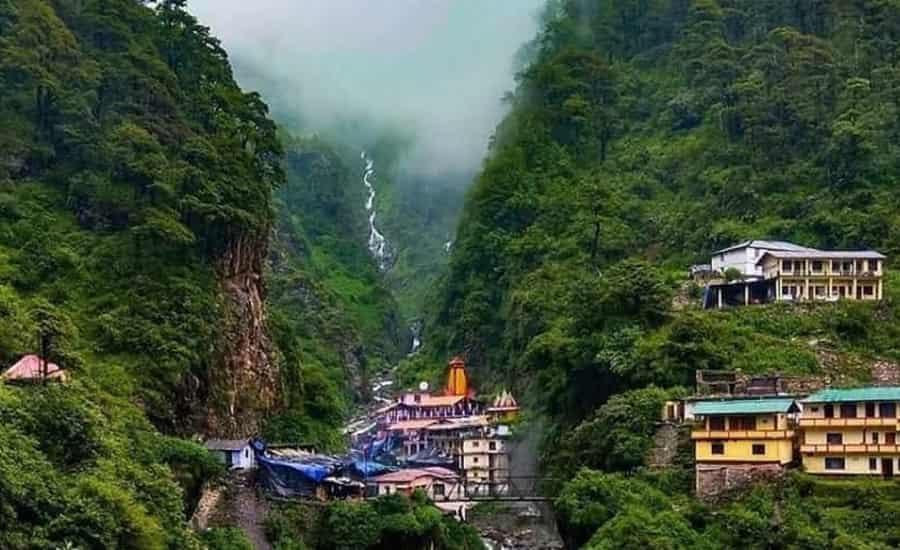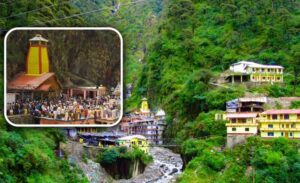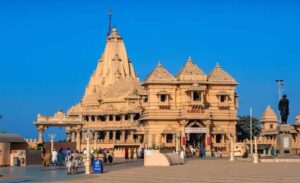History of Yamunotri Dham
Yamunotri, nestled in the Garhwal Himalayas of Uttarakhand, India, is one of the Char Dham pilgrimage sites and holds immense religious significance in Hindu mythology. The history of Yamunotri is intertwined with ancient legends, mythology, and stories that have been passed down through generations. In this narrative, we will delve into the rich tapestry of Yamunotri’s history, exploring the myths surrounding its origin and the cultural significance it holds for millions of devotees.

Legends and Mythology
Origin of Yamuna
The legend of Yamunotri begins with the birth of the sacred river Yamuna. According to Hindu mythology, Yamuna is believed to be the daughter of Surya, the sun god, and Sangya, the goddess of consciousness. The river descended from the heavens and took the form of a divine river on the request of her brother Yama, the god of death, to purify his abode.
Ascent of Yamuna to Earth
Yamuna’s descent to Earth is a fascinating tale. It is said that she initially flowed on the other side of the Yamunotri, and the temple is situated on the western bank. The river moved to the western side due to the tapas (austerities) performed by Asit Muni, a revered sage, who wanted Yamuna to flow on the side where he resided.
Yamunotri as Tapasthali
Yamunotri is often referred to as Tapasthali, the place of penance. The great sage Asti Muni is said to have bathed daily in the thermal springs here, known as the “Yamunotri Kund,” and performed rigorous penances.
The Story of Asit Muni
Asit Muni, an ardent devotee of the river goddess Yamuna, was deeply saddened by the deplorable condition of his body, which had become frail due to old age. In his pursuit of regaining youthfulness, he engaged in severe penances at Yamunotri. Pleased by his devotion, Yamuna appeared before him and offered to grant a boon. Instead of asking for his own rejuvenation, Asit Muni selflessly asked that anyone who bathes in the Yamunotri waters be freed from the fear of death.
Touched by the sage’s selflessness, Yamuna granted his wish. To this day, pilgrims believe that a dip in the holy waters of Yamunotri cleanses the soul and liberates it from the cycle of birth and death.
The Yamunotri Temple
The Yamunotri Temple, dedicated to Goddess Yamuna, is a significant pilgrimage site for Hindus. The current temple structure was built by Maharani Guleria of Jaipur in the 19th century. The temple houses a silver idol of the goddess Yamuna and a black marble idol of Lord Krishna, emphasizing the deep connection between Yamuna and Lord Krishna in Hindu mythology.
The Char Dham Yatra Connection
Yamunotri is one of the four sacred sites of the Char Dham Yatra, a pilgrimage circuit that also includes Gangotri, Kedarnath, and Badrinath. Pilgrims believe that undertaking the Char Dham Yatra washes away sins and paves the way for salvation.
Yamunotri in Hindu Scriptures
References to Yamunotri can be found in various Hindu scriptures and epics. The Skanda Purana, one of the eighteen Mahapuranas, contains descriptions of the significance of Yamunotri. The revered sage Adi Shankaracharya also mentioned Yamunotri in his works, emphasizing its importance in Hindu philosophy.
The Journey to Yamunotri
The journey to Yamunotri is not just a physical one but a spiritual odyssey. Pilgrims trek through challenging terrains, surrounded by the breathtaking beauty of the Himalayas. The Yamunotri trek is not only a test of one’s physical endurance but also a symbolic journey of self-discovery and devotion.
Conclusion
Yamunotri, with its mystical legends, sacred river, and ancient temple, stands as a testament to the deep-rooted spiritual heritage of India. The stories and mythology surrounding Yamunotri not only add to its charm but also inspire millions of pilgrims to embark on a journey seeking spiritual enlightenment and divine blessings. As the sacred waters of Yamuna continue to flow through the pristine landscapes of the Himalayas, the history of Yamunotri remains etched in the hearts of those who undertake the sacred pilgrimage, forging a connection between the earthly and the divine.
Also Read






